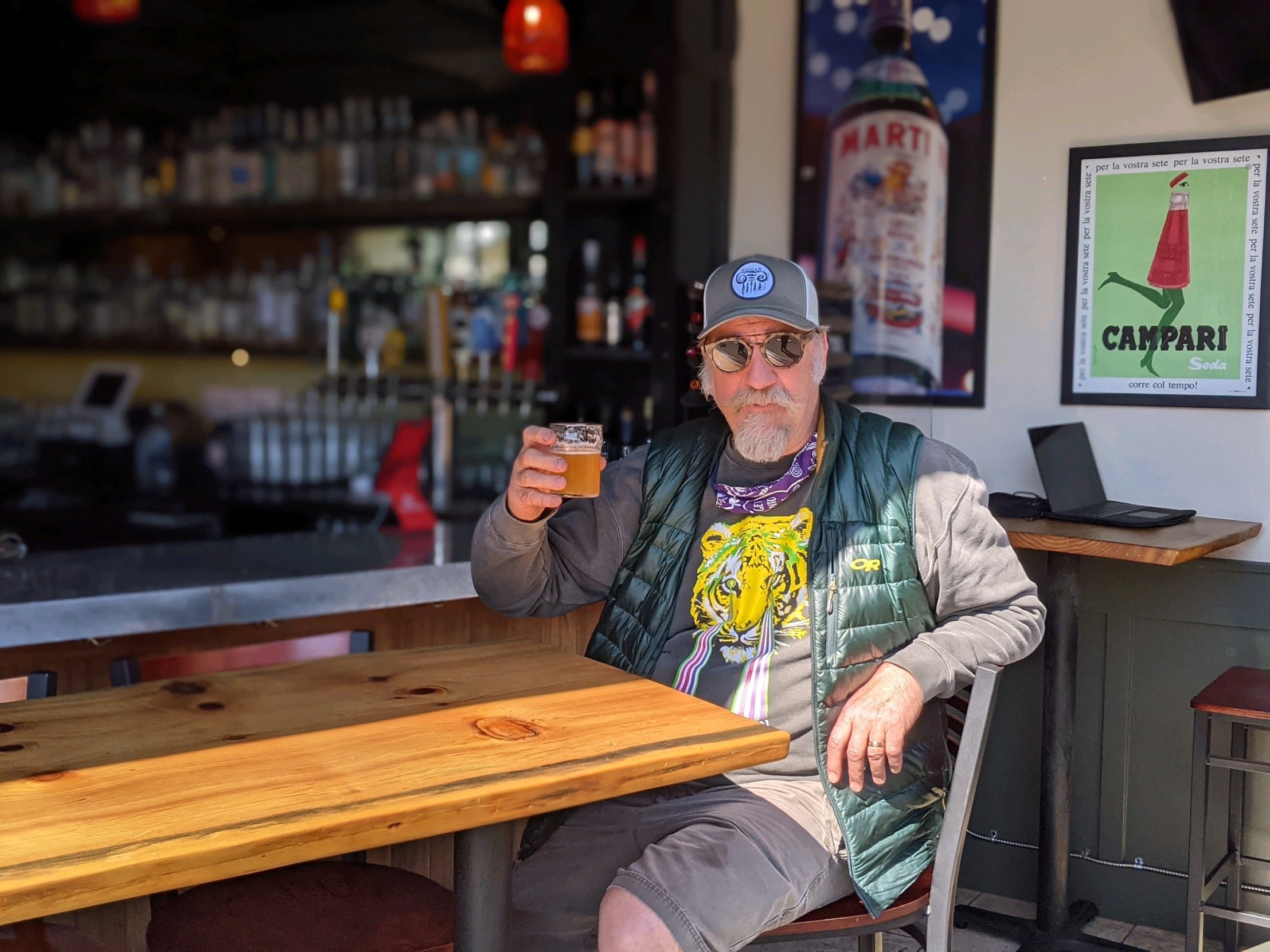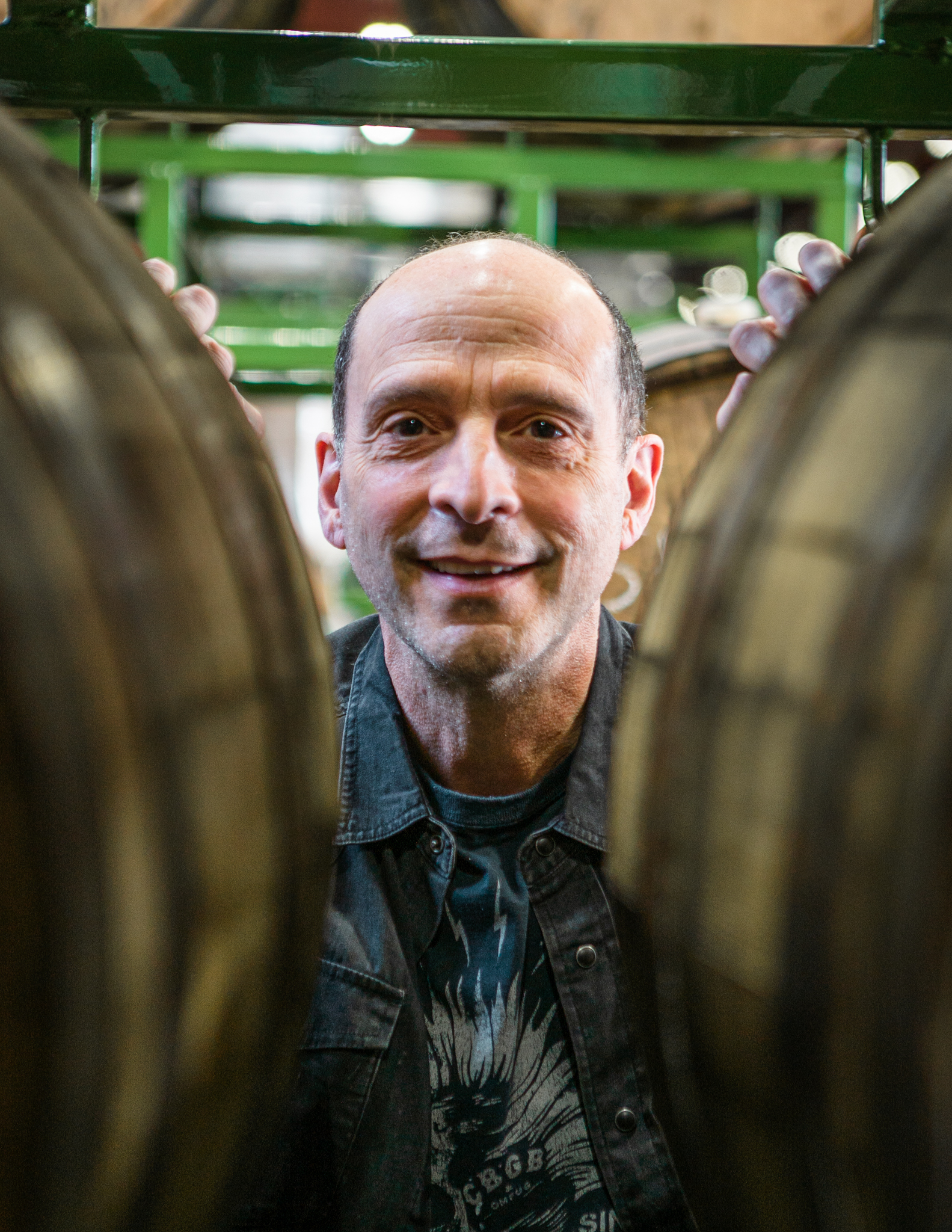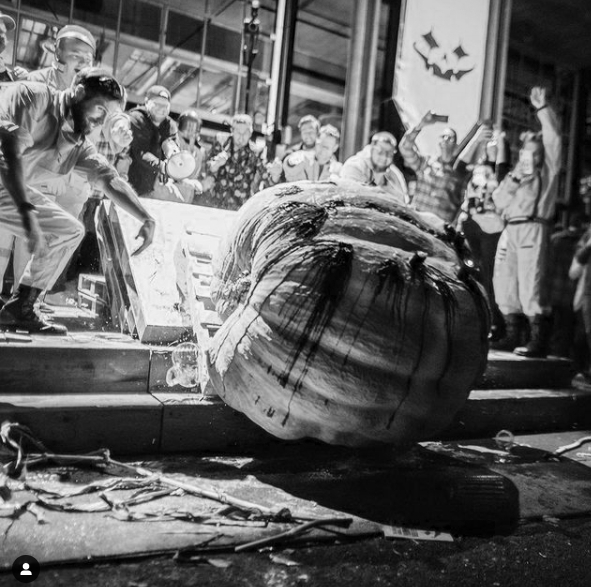Elysian Brewing is an icon of the Pacific Northwest beer scene. The brewery was founded by Joe Bisacca (a banker and avid homebrewer), David Buhler (a beer broker), and Dick Cantwell (a homebrewer turned pro) back in 1995. 25 years later, the brewery is one of the most renowned across the entire craft beer scene, even though some purists tut at the brewery’s partnership with Anheuser-Busch InBev, launched back in 2015.
Across the decades, Elysian has managed to remain one of the craft touchstones of the Seattle scene because it’s still producing great beers and pushing boundaries with innovative craft. Perhaps even more importantly, Elysian has built a community that’s spawned music/beer collabs, pumpkin festivals, and a support system for up-and-coming brewers in the region. The latter aspect has certainly helped them stay relevant as much as the former.
We were lucky enough to catch up with Joe Bisacca and David Buhler (Dick Cantwell moved on after the A-B InBev merger) on the phone recently. We caught up with them as they were celebrating the 25th anniversary of the brand, for which they created a whole line of merch and beer. They’re also celebrating the return of live music (something near and dear to every Seattleite’s heart) with their Cheers to Live Music program. They’re offering nationwide rebates on 6-packs of their Space Dust IPA and Contact Haze Hazy IPA alongside the purchase of a live music ticket. The conversation spanned how Bisacca and Buhler got started, what it takes to make an iconic beer, and what beer they actually like drinking after all these years.

How did you get into this 25 years ago?
Joe: I hated my job. I was in banking. I knew Dick [Cantwell] through my brother, George. They moved out to Seattle about six months before I moved out here too. So I got here and I didn’t really know anybody else. I was home brewing with a couple of guys that I met over on Alki Beach.
Dick got a job as a brewer at Pike Place and we started making some beer together and screwing around and started joking about “Dick and Joe’s brewery”. And I kind of really liked that idea. I was in my late 20s. I just remember thinking that I’d love to try it because if it doesn’t work, I can brush myself off and get back up and you go back to banking or something. And so we started jotting down some notes on napkins and things.
David: So I was down in Portland where I had a brokerage business. I was the 10 state rep for Rogue Ales. I had a couple of other small brands. And at the time, I was going down to this conference to meet with Bob Leggette for Manneken-Brussels Imports because they were looking to maybe hire me to take the Chimay and Schneider brands for the Northwest. And Dick was at the conference.
I didn’t know him really well but I knew the Pike guys because I worked for Rogue. And he said, “Hey, are you driving back today? Because I could use a ride.” And I went, “Yeah. I’m leaving in like an hour or so.” So as we’re driving back to Seattle, he asked me what’s next? And I said, “Well, I’ve got a business plan…” And so I’m talking to and explaining things and Dick and finally, he goes, “You need to meet Joe.”
Let’s fast-forward a bit. When was the moment where you felt you sort of broke through the static? Was it when you put that first keg out? Was it when you got onto the shelves at Safeway?
Joe: It’s not a light switch. It’s a dimmer switch. For me, it’s kind of was the last thing I was paying attention to. You’re always trying to keep the doors open and the toilets unclogged. Or we need more tanks because of overcapacity now or something. So there are all these issues that are coming up every single day that you have to deal with. Then when you step to the side and sort of you catch those moments in hindsight. But in the moment … I don’t know that I caught it. Something felt all of a sudden. I remember like, holy shit, we’re in stores. I think there was a point where we switched wholesalers to the Anheuser-Busch network in the state and I started seeing on-premise takeoff.
Seeing us in the grocery store setting, that’s like, “oh, we’re legitimate. Wow!”
David: I agree with Joe. It’s interesting… There is no “one” moment. I’ll be honest. Without some naive thinking and ambition, would we even have started this project? In the beginning, you think, “oh, we’re raising the money and building the brewery then we’re done.” Then you realized that it’s on the day you open that you actually just started. You realized that you haven’t done any hard work. The real hard work is now getting consumers into your establishment. And learning what they want and listening to them and growing and building a real business in a community. And we did that but we’re still doing that every day 25 years later.
What’s the process of choosing a beer that becomes part of your core line as opposed to a one-and-done? Is there a sort of sense while you’re brewing that it’ll be a winner or is it the reaction that you get from the crowds?
Joe: I think you have this ramp, right? Innovation is the first stage. The innovation stage for me in brewing is like baseball. If you suck at it 70 percent of the time you’re batting a .300, right? So it’s a risk tolerance. Try it. See if it works. Most of the time when something doesn’t work, it’s that maybe we should have used less of something in what we’re trying. So when we back off a bit on a recipe, that’s when things ramp up and maybe break through.
But I can say all of that and still think it’s still always driven by the customer. If you’re going to make a large volume of stuff, it doesn’t matter if we like it. The customer has to like it because they’re the ones that are going to pull it off the shelf.
Right. What’s a good example of a beer that broke through?
David: Night Owl, the pumpkin that Marcus brewed. To us it was kind of like, “oh, we brewed with pumpkin, interesting.” It wasn’t really anything special to us. But then the response from our customer was off the charts. When we took it to a beer festival, we had the longest line and ran out immediately. We knew immediately we would be doing more of that the next year. It was big and we’re still brewing it.
It feels like you guys were at the forefront of building a deep culture around your beer. The pumpkin ale is a good example because now you have a huge festival around it. People come from all around the country to be part of that experience. How do you build a culture around your beer that creates an in-real-life community?
David: We love beer. We take pride in it, sure. But we just love it. There’s no doubt about that.
But when you look at Seattle in the mid-1990s and the revolution of music, art, and dance that was going on… We were right in the middle of it in Capitol Hill, which to me is the edge of the forest where all these different groups come together into one area. All the demographics were right there. So we put a place in the middle of it all. We started hosting shows and donating kegs to the dance companies and art showcases. And we started going to the shows to pour those beers. It was vibrant. Our beer was part of the community. But these weren’t beer geeks. These were people who were just learning to love good beer. We were the ones that were showing people what good beer could be.
Joe: The space kind of told us what it needed to do. We needed to be that welcoming because that’s what the neighborhood was. Everybody’s always invited. Everything’s always cool. And I think that welcoming environment was the start of building that kind of cultish brand that everybody wanted to join in on.

You’ve become renowned for doing some amazing collaborations with bands, labels, Rolling Stone magazine… What drives you to do these collaborations?
Joe: We’ve done a bunch. Some have worked and some haven’t. I think the big thing is that it has to feel natural. You’re not going to pull the wool over the eyes of a customer out there. It’s got to be an honest partnership, something you’re doing together that actually makes some sense for it to work. Working on the beer together, there’s got to be a story behind it that is real. If it doesn’t have that, it will fizzle.
David: The other thing is that it has to make our pulse race. We did the Sub Pop Loser Pale Ale with Jon Poneman. Hey. They came to us and said, “it’s our anniversary, can we make a beer?” I went, “yeah! That’d be fun.” Stuff like that makes our pulse race. We love it.
The world’s your oyster in that you can brew whatever you want. But then the rubber hits the road and there are only X amount of barrels to age your beer in. And there are only X amount of hops or malts you can get from some certain source. There are finite realities to brewing beer. What’s the path you take to find that next thing to brew?
David: There are so many times where I’ve tasted something and thought, “oh my God, that is awesome.” Then the first thing I’ll ask is, “what hops are in it?” Because if it’s experimental T107 or whatever, we know we can’t do this in bigger batches or we need to find a substitute.
Then we have to ask what level of play this style might get. Is that something that could just be for the pubs? Is it something that could just be for Seattle or for another market because it makes sense? Or is it really something we really feel? And then you have to think and ask everyone if this could be the next thing.
Joe: For sure, there’s the following of trends and then there’s creating the trends. Following the trends, you’re a voice in a chorus. It’s kind of stupid. I don’t want to make a style just because everyone’s making a style. We want our own beers to stand for themselves.
Is there some magic? We did Salute the Sun pale ale with black limes. Black limes are weird. It’s a polarizing taste. But we thought, “let’s put it out there and try it.” Will it have some traction? What if it draws some attention to the brand? What if it sort of pulls people into our world a little bit too? So there are those tried and true things and then there are some of these wild things that show somebody something new.
David: And you know how hard it is to get a whole bunch of pallets of black limes?!
That’s got to be hard…
David: So, yes, the supply chain comes into play because after we taste a beer then it goes to the to where do we get it? How do we get it? And some things work and some things don’t.
What was the last beer you’ve had that you really, really fell in love with?
David: Would it be stupid to say the one in front of me?
I talk to my team and my friends about drinking beer and sometimes we tend to look at it and smell it and look at it and taste it, you know. Where other times I’ve just come off the ski hill and you could give me a beer and I drink half of it in one gulp. And that’s how a lot of people drink beer. They don’t taste it. They don’t swirl it.
But I will say I had a SuperFuzz yesterday and it was spot on, and we make a lot of beer. I just thought was, “oh my God, this is a great beer.” It made me so happy to be making it.
Nice. I love that beer on a hot day.
Joe: I think I like the weirder beers. I kind of get into those a little bit. We brewed a beer this last year called Gator Pie, which was a key lime pie beer. It’s a kettle sour, which I’m into. We’re mashing the sour beer and folding it back in a new batch to help build the sour base. Then we actually crumbled up boxes of Graham crackers and threw them into the mash. You could really taste the Graham cracker crust with the lime and the sour. It had the right balance.
When I drank it, I thought, “God, this is weird…” But it was really good. For me, I love that moment of “this is bizarre.”








